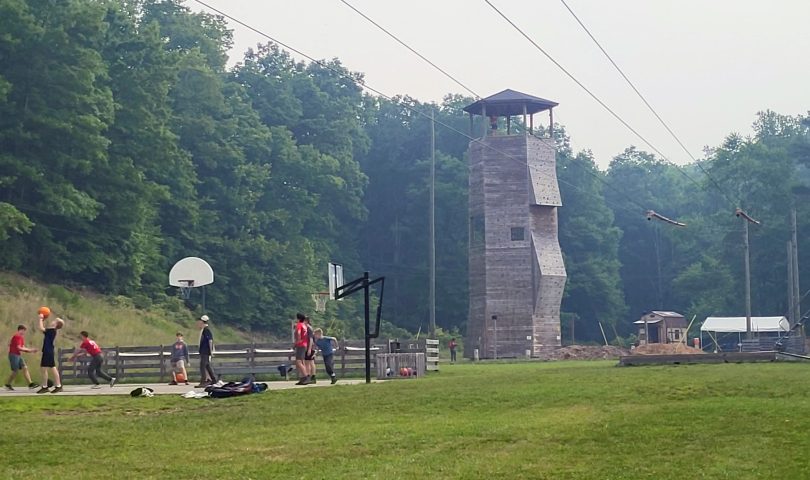In 1954, Camp Mountaineer opened the gates for the Boy Scouts of America (BSA) Mountaineer Area Council and since then, thousands of scouts have explored the property’s more than 1,000 acres of land.
On Wednesday, The Dominion Post joined the Monongalia County Commissioners, who had never visited the 187 Camp Mountaineer Road site off Grafton Road, for a tour of the camp which several staff members described as “a hidden gem of Mon County.”
“Not many people know we are here or if they do, they have never been here,” Amy Garbrick, council vice president of program said.
Garbrick and Scout Executive/CEO Scott Hanson said this week’s group of 225 campers, both boys and girls, and troop leaders was the largest they have had at the camp since before the pandemic. Garbrick said the camp did remain open during COVID, but groups were significantly smaller and special arrangements had to be made for certain activities.
This year they were happy to return to near-capacity numbers with 17 troops staying with them this week from several different states – West Virginia, Maryland and Pennsylvania, along with Washington, D.C.
Garbrick and Hanson said while most troops come from this region of the county, the camp is open to troops nationwide and they have had scouts from as far as Puerto Rico come to Camp Mountaineer.
This year, scouts will have the opportunity to work toward or earn 40 different merit badges during the week including skills like swimming, canoeing, fishing, rifle, shotgun, and archery. Campers can also learn advanced wilderness survival skills and ecology conservation.
The camp also has facilities for the BSA COPE (Challenging Outdoor Personal Experience), a program that consists of group initiative games, trust events, and high and low ropes course. In the program, scouts will climb, swing, balance, jump, rappel, and devise solutions to a variety of problems as a team and individually.
In recent years, several other facility improvements were made through partner and donor support, including 20 Adirondack shelters to campsites around the camp, a Welcome Center, a shooting complex, bathroom facilities, the Catawba Trading Post where campers can purchase items they may need, and a 60-foot-tall hexagon climbing and rappelling tower.
A favorite amongst the campers and staff is a quarter mile long tandem zipline that runs from behind the Welcome Center across their parade field. Despite the best efforts of camp staff, the commissioners chose to not try out the zipline.
Strawn Lake, where campers can work on badges dealing with water, became a topic of conversation during the tour after Garbrick and Hanson mentioned having difficulties over the years finding fish to stock the small lake. Since the property is privately owned, the Department of Natural Resources cannot stock the lake and tight budgets make it difficult to purchase fish for stocking.
Camp Director Daniel Flowers said this week there were around 40 scouts trying to get their fishing badge and each needed to catch a fish, so not having the lake stocked in several years made that task more difficult. The commissioners made no promises but said they would try to do what they could to help find a solution.
Community partners contribute greatly to the camp Garbrick said, including Mon EMS, which provides a paramedic full-time at the camp during summer camps, and WVU food service provider Sodexo, which brings three meals a day for the campers.
While the busiest time for the facility is usually the summer camps, Garbrick said the camp is always open and hosts scout troops and other events throughout the year.
For more information about Camp Mountaineer and BSA troops within the Mountaineer Area Council, including how to join or volunteer, visit macbsa.org. The Mountaineer Area Council serves 12 counties in North Central West Virginia including Barbour, Doddridge, Gilmer, Harrison, Lewis, Marion, Monongalia, Preston, Randolph, Taylor, Tucker, and Upshur.




